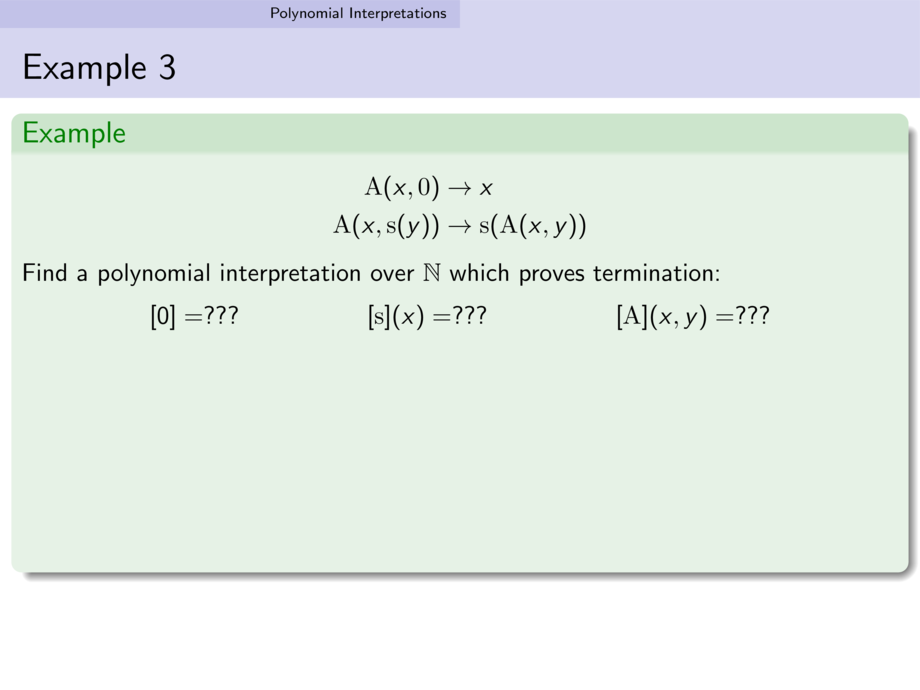



































































































146/365
\begin{frame}[t]
\frametitle{Example 3}
\vspace{-1em}
\begin{example}
\vspace{-1em}
\begin{align*}
{\rm A}(x,{\rm 0}) &\to x\\
{\rm A}(x,{\rm s}(y)) &\to {\rm s}({\rm A}(x,y))
\end{align*}
\vspace{-1.5em}
Find a polynomial interpretation over $\nat$ which proves termination:
\vspace{-.5em}
\begin{align*}
\interpret{0} &= \alt<2->{1}{???} & \interpret{{\rm s}}(x) &= \alt<2->{x+1}{???} & \interpret{{\rm A}}(x,y) &= \alt<2->{x + 2\cdot y}{???}
\end{align*}
\vspace{-2em}
\begin{itemize}
\alt<-4>{
\item<3-> \gemph{Are the functions $[f]$ monotone?}\\\smallskip
\onslide<4->
Yes, since whenever $a > b$, then
\\\quad $\interpret{{\rm s}}(a) = a+1 > b+1 = \interpret{{\rm s}}(b)$,
\\\quad $\interpret{{\rm A}}(a,y) = a+2\cdot y > b+2\cdot y = \interpret{{\rm A}}(b,y)$, and
\\\quad $\interpret{{\rm A}}(x,a) = x+2\cdot a > x+2\cdot b = \interpret{{\rm A}}(x,b)$,\\[1em]
}{
\item<5-> \gemph{Does $\interpret{\ell,\alpha} > \interpret{r,\alpha}$ hold?}\\\smallskip
\onslide<6->
Yes since,
\vspace{-1.8em}
\begin{align*}
\interpret{{\rm A}(x,{\rm s}(y)),\alpha}
&= \interpret{{\rm A}}(\alpha(x),\interpret{{\rm s}}(\alpha(y)))\\
&= \alpha(x) + 2\cdot \alpha(y) + 2\\
&> \alpha(x) + 2\cdot \alpha(y) + 1\\
&= \interpret{{\rm s}(A(x,y)),\alpha}\\
\interpret{{\rm A}(x,{\rm 0}),\alpha}
&= \alpha(x) + 2\cdot 1
> \alpha(x)
= \interpret{x,\alpha}
\end{align*}
\vspace{-2.2em}
}
\end{itemize}
\onslide<7->
Hence we have proven termination.
\end{example}
\end{frame}

